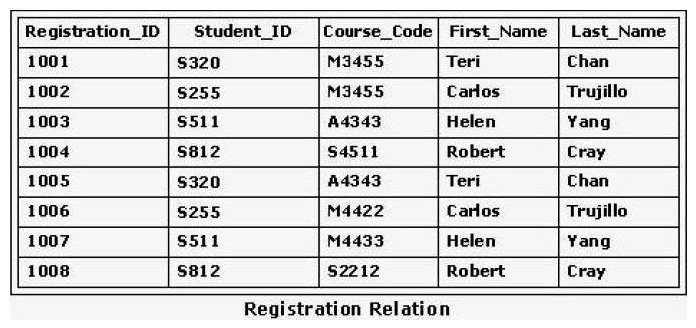Multiple Choice
What is the highest normal form of the relation(s) shown in the exhibit? 
A) Second normal form
B) First normal form
C) Boyce-Codd normal form
D) Third normal form
E) STUDENT( Student_Number: integer NOT NULL Name: variable length character string length 20 NOT NULL) Primary Key Student_Number CLASS( Class_Num: integer NOT NULL Class_Name: integer NOT NULL) Primary Key Class_Num
F) STUDENT( Student_Number: integer NOT NULL Name: variable length character string length 20 NOT NULL) Class_Num Foreign Key Class_Num References STUDENT
G) Primary Key StudenMMumber STU_CLASS( Student_Number: integer NOT NULL Class_Num: integer NOT NULL) Primary Key Student_Number CLASS( Class_Num: integer NOT NULL Class_Name: integer NOT NULL) Primary Key Class_Num
Correct Answer:

Verified
Correct Answer:
Verified
Q24: Consider the entity-relationship (ER) diagram shown in
Q25: What is a relational database domain?<br>A) A
Q26: Consider the following SQL statement and the
Q27: The exhibit shows a relation for a
Q28: Several SQL operations are performed by User
Q30: Consider the relations shown in the exhibit.
Q31: Which subset of Structured Query Language (SQL)
Q32: Consider the relational database shown in the
Q33: Your enterprise is creating a relation (shown
Q34: Consider the following database information: domain s_id: